A voyage through space, arts and the seven seas Understand article
Science in School is published by EIROforum, a collaboration between eight of Europe’s largest inter-governmental scientific research organisations. This article reviews some of the latest news from the EIROforum members (EIROs).
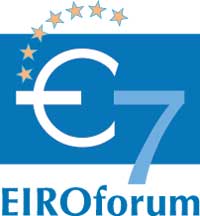
EIROforum
EIROforum combines the resources, facilities and expertise of its member organisations to support European science in reaching its full potential.
CERN: And the winner is… FameLab comes to CERN
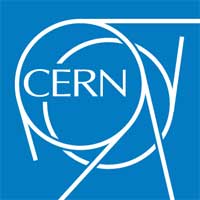
On 4 February 2012, 22 young scientists aged 18 to 35 convened at CERN’s Globe of Science and Innovation for the regional FameLab semi-finals of the French-speaking part of Switzerland. This UK-based international science communication competition has become a truly global event: in 2012, more than 20 countries are participating, among them for the first time Switzerland. However, FameLab is not just a competition. The idea is also to create a group of young scientists committed to their research and to science communication.
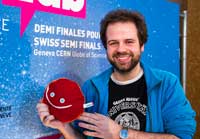
Lemmer with his proton prop
Image courtesy of CERN
Five winners impressed a panel of experts with a three-minute presentation on a science topic of their choice. Among them is first-prize winner Boris Lemmer, a PhD student from the University of Göttingen, Germany, currently working at CERN, who acted out a conversation between his father and himself with a dry sense of humour that won over the judges and audience. As Boris explains, “It addressed the day that every student fears, when the parents want to know what you’re actually doing.”
On 30 March in Zürich, Swiss representative Bechara Saab, a postdoctoral student at the University of Zürich’s Brain Research Institute, was chosen from among the five regional finalists to take part in the international FameLab event at Cheltenham Science Festival, UK, in June.
More information about the international- and Swiss-competitions, including details of participants and winners
Based in Geneva, Switzerland, CERN is the world’s largest particle physics laboratory
EFDA-JET: Robots do the dirty work

The Joint European Torus (JET) is a doughnut-shaped vessel, 6 metres from side to side, in which fusion experiments ten times hotter than the Sun are carried out.
These experiments produce neutrons, which make the walls radioactive, making it unsafe for humans to carry out maintenance inside the vessel. Instead, a versatile pair of 6-metre-long robotic arms has been developed, which can perform all kinds of maintenance using a virtual-reality remote-handling interface. The system is so versatile that scientists have even got it doing the vacuuming.
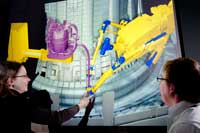
Anna Widdowson and remote
handling engineer Justin
Thomas discuss the nitty-
gritty of the virtual-
reality vacuuming interface
at the Joint European Torus
Image courtesy of EFDA-JET
Anna Widdowson is one of these scientists: she studies dust. But the dust she collects is not just last week’s biscuit crumbs and dog hairs, it is residue left in JET by the fusion plasma pulses, formed from fuel combined with material burnt off the walls. “We need to balance the books to see where all the fuel has gone,” she says. Every trace of fuel, which includes radioactive tritium, is accounted for, and if possible reused.
Anna thinks the multi-million euro investment in the system is worthwhile. “I hate vacuuming!” she laughs. “The robotic arm’s total vacuuming time was over 24 hours in the last shutdown. Imagine that!”
To find out more about the JET vessel, see:
Rüth C (2012) Harnessing the power of the Sun: fusion reactors. Science in School 22: 42-48.
Situated in Culham, UK, JET is Europe’s fusion device. Scientific exploitation of JET is undertaken through the European Fusion Development Agreement (EFDA)
EMBL: All shipshape – TARA Oceans’ successful return

After two and a half years of sailing the world’s oceans, the schooner of the Tara Oceans expedition returned to its home port, Lorient in Brittany, France, on 31 March 2012. Codirected by Eric Karsenti, senior scientist at CNRS and EMBL, and Etienne Bourgouis, president of the Tara Foundation, the vessel has sampled material for laboratory analysis at 150 sites worldwide, to study the effects of global warming on planktonic and coral reef ecosystems and their consequences on food webs and marine life.
The expedition’s success was celebrated in Lorient by two full days of workshops, exhibitions, lectures and more, followed by a week of activities for local schools, during which students visited the boat, met the crew, and presented the work they had done throughout the school year on the subject of Tara.

Image courtesy of J Girardot /
Tara Oceans
And the project will continue – the first scientific results are about to be published, but the analysis of the samples will still take several years to complete, and the project will be presented throughout 2012, for example at the Earth Summit in Rio, Brazil.
For more information about the Tara Oceans expedition, including interviews, videos, films, blogs, DVDs, books and more, in English, French, Spanish and Portuguese
The Tara Junior website also offers a wealth of material for children and teachers, in English and French
Listen to a podcast about Tara Oceans
EMBL is Europe’s leading laboratory for basic research in molecular biology, with its headquarters in Heidelberg, Germany
ESA: YouTube Space Lab – the Universe’s largest science lesson

Having your science experiment performed on board the International Space Station (ISS) with the whole world watching via a YouTube live stream: this exciting experience awaits the two winning teams of YouTube Space Lab, a campaign co-sponsored by ESA and other space agencies.
Students aged 14 to 18 from around the world were challenged to design a science experiment to be performed in September 2012. Six finalist teams were selected from more than 2000 proposals, among them Laura Calvo and María Vilas from Spain who wanted to test the effect of microgravity on how different types of liquid interact when mixed with compounds that lower their surface tension.
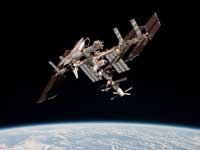
Photo taken by ESA astronaut
Paolo Nespoli from the
Russian Soyuz spacecraft
shortly after its release from
the Space Station
Image courtesy of ESA / NASA
The global winners, Dorothy Chen and Sara Ma from the USA, and Amr Mohammed from Egypt, will get to choose a unique space experience: either a trip to Japan to watch their experiment lift off in a rocket bound for the ISS, or, once they are 18 years old, a one-of-a-kind astronaut training experience in Star City, Russia, the training centre for Russian cosmonauts.
In addition, the regional winners from Europe, the Middle East and Africa will join a hands-on guided tour of ESA’s European Astronaut Centre training facilities in Cologne, Germany.
Learn more about the YouTube Space Lab competition, meet the winners, and join the Universe’s largest science lesson in September
ESA is Europe’s gateway to space, with its headquarters in Paris, France
ESO: Carina unveiled by infrared imaging
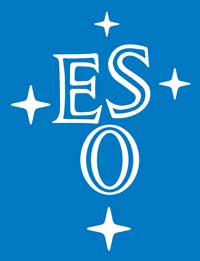
ESO’s Very Large Telescope (VLT) has delivered the most detailed infrared image of the Carina Nebula stellar nursery taken so far. Many previously hidden features, scattered across a spectacular celestial landscape of gas, dust and young stars, have emerged.
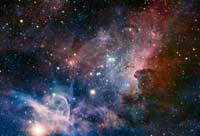
Photo This broad panorama
of the Carina Nebula, a
region of massive star
formation in the southern
skies, was taken in infrared
light using the HAWK-I
camera on ESO’s VLT
Image courtesy of ESO / T
Preibisch
The Nebula is about 7500 light-years away in the constellation of Carina (The Keel) in the part of the Milky Way that is best seen from the southern hemisphere. This cloud of glowing gas and dust is one of the closest incubators of very massive stars to the Earth and includes several of the brightest and heaviest stars known. One of them, the mysterious and highly unstable star Eta Carinae, was the second brightest star in the entire night sky for several years in the 1840s and is likely to explode as a supernova in the near future by astronomical standards (the next million years). The Carina Nebula is a perfect laboratory for astronomers studying the violent births and early lives of stars.
For more information, see the press release
ESO is the world’s most productive astronomical observatory, with its headquarters in Garching near Munich, Germany, and its telescopes in Chile
ESRF: Picasso meets Einstein – a contest for young people
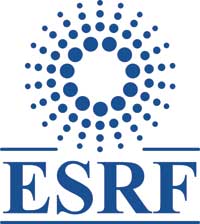
Three-dimensional X-ray images turned into an oil painting, molecules inspiring the shape of a sculpture, a time-lapse mosaic of what scientists see at work – ESRF and the European Commission have joined forces with 15 other partners under the co-ordination of the Marche Polytechnic University in Ancona, Italy, to shed light on the common roots of creativity in science and the arts.
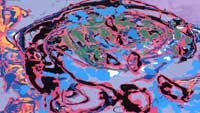
painting was inspired by a
3D model of a fossil wasp.
The 16 layers of enamel
represent the 720 layers that
comprise the original 3D
model
Image courtesy of ESRF /
I Petmezakis
In July 2011, four young artists visited ESRF during one week, and their creations are on display at an exhibition that began travelling across Europe in February 2012. This is one of the showcasing events of Immersion into the Science Worlds through Arts (ISWA), a project with the objective to inspire young people across Europe to create works of art about science.
ISWA is organised in five artistic areas: modern dance, cinema, contemporary art, imaging and literature. Students aged 15 to 19 were invited to take part in a pan-European competition by developing their own creations in these categories to win one of 35 attractive prizes. The final event for all winners will take place at ESRF in February 2013.
Situated in Grenoble, France, ESRF operates the most powerful synchrotron radiation source in Europe
European XFEL: The data challenge
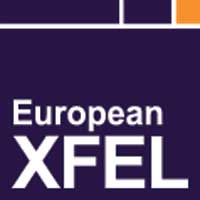
The X-ray laser facility European XFEL will produce an incredible amount of data – all of which needs to be stored and made available for analysis. Its instruments will generate 10 million gigabytes of data per year for the first few years, increasing to more than 50 million gigabytes per year as a result of detector upgrades. To picture the storage of 50 million gigabytes of data, imagine 10 million DVDs stacked on top of one another – they would reach 12 kilometres high.
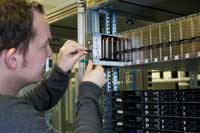
processing unit boards at a
test system being
constructed in the DESY
computer centre
Image courtesy of European
XFEL
“The extremely large data volumes generated at X-ray free-electron lasers require a new way of thinking about how data is managed and analysed,” says Christopher Youngman, leader of the European XFEL group ‘Data Acquisition and Controls’. At the European XFEL, data will be stored securely in a large disk system, exploiting technologies similar to those used by companies such as Google. To provide enough computer power when the X-ray laser facility becomes operational, the group has begun to look into capabilities of processors used in graphic cards to do calculations.
European XFEL is a research facility currently under construction in the Hamburg area in Germany. It will generate extremely intense X-ray flashes for use by researchers from all over the world
ILL: DNA is as stretchy as nylon
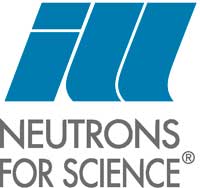
Neutron scientists at ILL have measured how fast sound travels along DNA to determine its structural elasticity or ‘stiffness’, and account for the wide variety of values obtained from previous measurements.
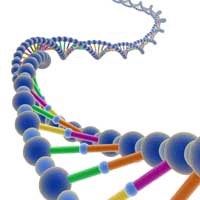
Fotolia.com
The double-helix structure of DNA is constantly being mechanically twisted, bent and stretched inside the cell through interactions with proteins. “Quantifying the molecular elasticity of DNA is fundamental to our understanding of its biological functions,” says Mark Johnson, a physicist at ILL.
The team used the brand new IN5 spectrometer at ILL – and its exceptionally high neutron flux – to measure the structural flexibility of the molecule. On DNA samples placed inside the instrument, the team measured how sound waves travel along the double-helix structure. By measuring frequencies and force constants, they were able to determine the DNA’s stiffness as being 83 N/m, which is stiffer than predicted by classical measurements. This value is roughly equivalent to that of nylon, commonly used in textiles.
For more information, see the press release, or the research paper:
Van Eijck L et al. (2011) Direct determination of the base-pair force constant of DNA from the acoustic phonon dispersion of the double helix. Physical Review Letters 107, 8: 1-5. doi: 10.1103/PhysRevLett.107.088102
ILL is an international research centre at the leading edge of neutron science and technology, based in Grenoble, France






